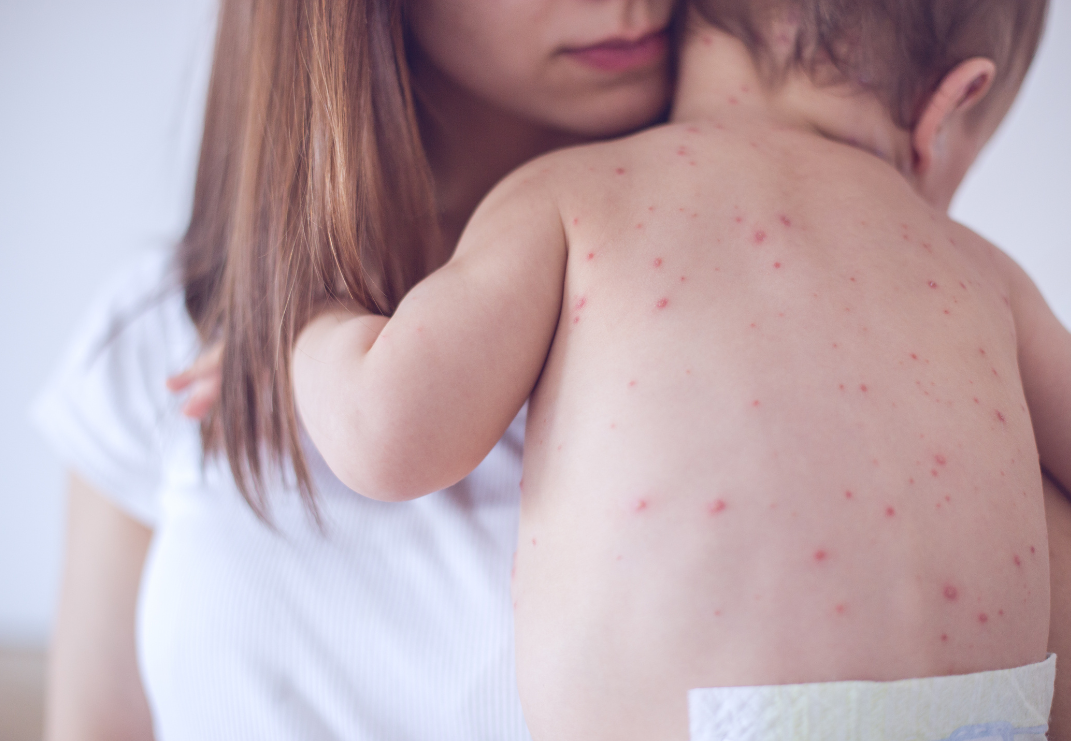Measles Uptick In 16 States Has Health Officials Raising The Alarm. What You Need To Know.

Measles, a highly contagious respiratory infection that primarily affects children, and was declared eradicated in the US in 2000, has made a comeback.
The Centers for Disease Control and Prevention first issued an emergency warning on Jan. 25, saying 23 cases were confirmed in several states between December 1, 2023, and January 23, 2024.
Since then, seven more states have been added to the list with at least 18 more infections. Measles cases have now been reported by 16 states: Arizona, California, Florida, Georgia, Indiana, Louisiana, Maryland, Michigan, Minnesota, Missouri, New Jersey, New York City, Ohio, Pennsylvania, Virginia, and Washington.
Health professionals have started to raise the alarm. Measles is one of the most contagious diseases humans have ever faced and has been documented going all the way back to the 9th Century. The virus can be spread through the air, infectious droplets, or on surfaces. People who are exposed to the virus and are not vaccinated, or have never had measles before, have a 90% chance of getting sick. One person infected by measles can infect nine out of 10 of their unvaccinated close contacts.
Some common symptoms of measles include high fever, coughing, runny nose, and red watery eyes. People with measles may also develop small white spots inside their mouths, as well as a rash all over their body. According to the CDC, symptoms typically appear between seven and 14 days after a person has been exposed to the virus.

Measles can also lead to severe complications, such as blindness or long-term vision problems, as well as death. Around one to three out of every 1,000 children who are infected with measles will die from respiratory and neurological complications. About 1 in 5 people in the U.S. who get measles will be hospitalized. 1 out of every 1,000 people with measles will develop brain swelling, which could lead to brain damage. 1 to 3 out of 1,000 people with measles will die, even with the best care.
It’s not just children who are at risk. Measles increases the risk of miscarriage in pregnant women, and can cause stillbirth, premature labor and low-birth weight infants. Those with weakened immune systems are more susceptible to developing serious complications. And anyone who has no prior measles exposure can get infected.
Despite the seriousness of measles, the virus can be prevented with proven vaccines. The first measles vaccines became available in 1963. Known as the MMR vaccine, it protects against three diseases: measles, mumps, and rubella. Two doses of the MMR vaccine are about 97% effective at preventing measles; one dose is about 93% effective.
Before vaccines, an estimated 3 to 4 million people contracted measles each year in the United States, with 50,000 hospitalized and around 500 deaths. Untold tens of thousands suffered long term consequences.
Globally, vaccines have had a tremendous impact. According to the World Health Organization, between 2000 and 2020, measles vaccination averted 56 million deaths.
By 2000, the virus was declared eradicated in the United States(absence of continuous disease transmission for greater than 12 months). There have been sporadic outbreaks since then, most notably in 2019 when 1274 people became infected.
The CDC said there are several reasons why measles can make a comeback; an increase in the number of travelers who get measles abroad and bring it into the U.S., and/or further spread of measles in U.S. communities with pockets of unvaccinated people.
It’s the latter point that has scientists and healthcare professionals concerned. 95% vaccination is the threshold that the CDC identifies as the key to herd immunity in a community. The United States had largely achieved that in eradicating measles. But the rates began to decline beginning in 2019 when pandemic disruptions caused people to lag in their uptake of all vaccines. Another reason is widespread disinformation causing vaccine hesitancy among certain sectors of the population. Yet another driver of falling vaccination rates is a noted rise in exemptions to all vaccines due to religious or other reasons.
These factors have led to rates dropping below the herd immunity threshold. In 2023, 36 states saw their vaccination rates fall to 93%.
“This means 250,000 kindergartners are at risk for measles infection today,” said Dr.Katelyn Jetelina, an epidemiologist who writes a weekly newsletter on Substack. “This provides large pockets of unvaccinated people—a breeding ground for infectious diseases. Take Ohio, for example, which had the 9th lowest coverage in MMR vaccination last year. It’s no coincidence that there was a measles outbreak last year—85 children got sick, and 36 were hospitalized.”
Florida’s Surgeon General, Dr. Joseph A. Ladapo, who has drawn widespread criticism for calling for a halt to the use of mRNA Covid vaccines, recently issued a letter advising parents regarding the current measles outbreak in the state, where 8 children at one school came down with the virus.
In a move that drew condemnation from healthcare professionals around the nation, Ladapo stated that unvaccinated kids who were exposed to measles could continue to attend school. This goes against the long held consensus that those with no prior immunity need to isolate for 21 days. Ladapo also failed to recommend kids without immunity get vaccinated.
“This is unprecedented,” Dr. Jetelina said.
Scientists and doctors continue to implore the public to get their children vaccinated, saying that the MMR vaccine has been proven safe and is the only path to eradicating the measles scourge.
"The science really supports the safety and effectiveness of vaccinations," said Dr. Katherine Baumgarten, medical director for infection control and prevention at Ochsner Health in New Orleans in a recent article in Time magazine. However, "we know there is a lot of distrust in vaccines, and that’s a shame. If vaccination rates continue to decline, then we will see more of the diseases that we had hoped to completely eliminate.”
See also:
CDC Fact Sheet on Measleshttps://www.cdc.gov/measles/downloads/fs-measles-outbreak-508.pdf
*For more information on measles, its symptoms, how to prevent it, and what to do if you or someone you know gets the virus, the Cleveland Clinic provides a detailed primer HERE.
**Here at Tayo we aim to offer the latest and best information regarding important public health matters. Any guidelines and suggestions listed here are based upon the recommendations of the CDC and other health care professionals. However, this advice may not suit each individual circumstance and is just meant as general guidelines. We encourage you to consult with your healthcare provider to get the answers that best suit your individual needs.


